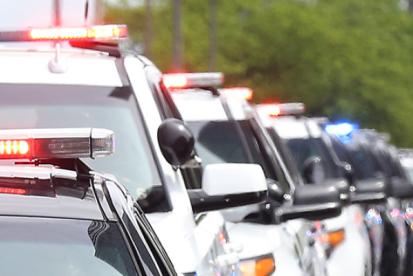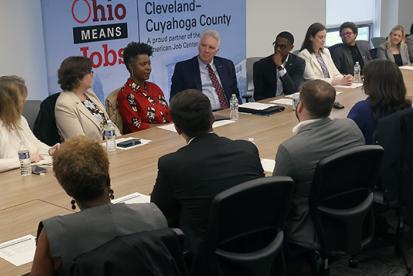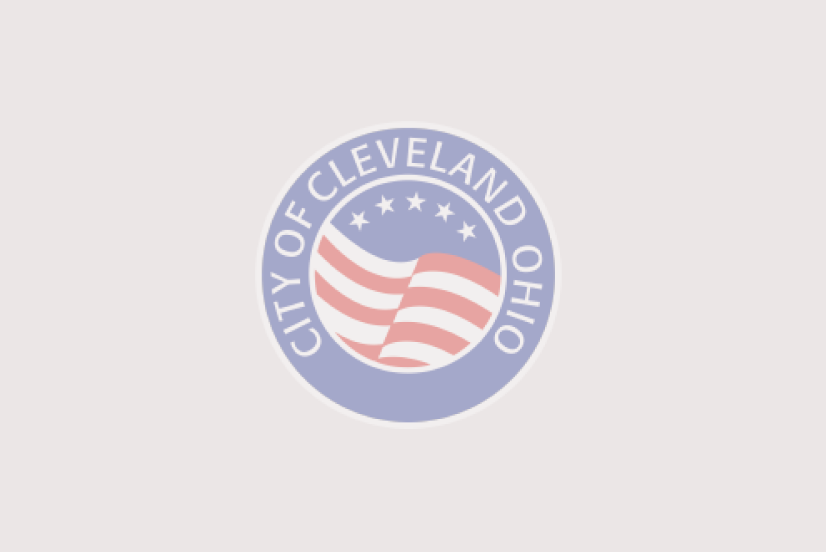The Group Plan Commission’s Superior Crossing Project Kicked Off Today with a Ceremonious Farewell to the Infamous Concrete Barriers
Monday, March 25, 2024 — Cleveland — The City of Cleveland, in partnership with The Group Plan Commission, began work on the Superior Crossing Project with the removal of the longstanding concrete barriers in Public Square. The project is the latest phase of transforming Public Square and is expected to be completed in late June. Once finished, the renovations will provide increased safety, enhanced mobility, and improved aesthetics for pedestrians, cyclists, and transit so that residents and visitors can better access and utilize this key area of Downtown Cleveland.
“Today is finally the day we get to turn the lights off on the concrete barriers and bench them for good – just in time before thousands of visitors make their way here for next weekend’s Final Four and Solar Eclipse events,” said Mayor Justin M. Bibb. “It has been a bumpier road than we originally thought, but I’m extremely grateful to those who provided funding and am happy to deliver on this campaign promise that will improve the People’s Park so that everyone in our city will be able to better access this great asset.”
The Bibb Administration moved quickly upon taking office proposing legislation in March 2022 that was passed by City Council and provided $1.5 million in funding for removal, repair, and redesign work. The remaining funds necessary for the project were secured within 9 months of the City’s catalytic investment. Cuyahoga County contributed more than $1 million and the Greater Cleveland Regional Transit Authority (RTA) contributed $500,000 towards the project. Additional funds were provided by the KeyBank Foundation, Gund Foundation, Bedrock, Rocket Mortgage, Cleveland Cavaliers, Jack Entertainment, Sherwin-Williams, and K&D Group.
“Public Square holds immense significance for our residents and visitors, the City of Cleveland and the region,” said Cuyahoga County Executive Chris Ronayne. “This project will complete the vision of Public Square as a premier public space that welcomes pedestrians and transit riders and celebrates our history.”
Once funding was in place, the City worked with the Group Plan Commission early last year to refine design details that considered underground utilities, public safety, mobility and aesthetics. In May 2023, the City’s Planning Commission signed off on final plans to remove the concrete barriers and replace them with new security bollards and a retractable Raptor system for special events. The project also calls for shared lane markings for bicyclists and a new raised “tabletop” crosswalk — the first of its kind in Cleveland — in the center of the block to facilitate safe and intuitive pedestrian flow between the northern and southern portions of Public Square while maintaining bus operations.
"Public Square is not only the front door for downtown Cleveland, but it is RTA’s number one transfer location for buses and rapid transit trains: approximately 5,000 transfers daily,” said RTA General Manager and Chief Executive Officer India L. Birdsong Terry. “The modifications (removal of the barriers) will enhance operational efficiency and minimize impact to our customers.”
The Group Plan Commission is the project team responsible for delivering the project on behalf of the City and consists of the original architects, engineers, contractors and project managers who understand the complexities of constructing permanent barriers, with knowledge of the existing underground infrastructure. Removal requires surgical precision to ensure utilities below the surface are not damaged.
“Group Plan Commission is pleased to steward this project to completion,” said Sanaa Julien, CEO of The Group Plan Commission. “We’re proud to work with our partners in Downtown Cleveland to ensure our vision of an 18-hour, 15-minute City is realized. This is the next step in the process towards achieving that goal.”
The finalized plan is a product of more than a dozen small group coordinating sessions, multiple site visits, and careful review of eight design alternatives. Post-Covid supply chain issues prevented construction from beginning last year.
To view Frequently Asked Questions, click here.



